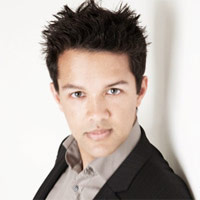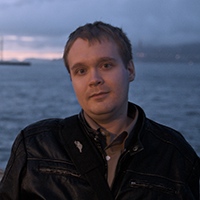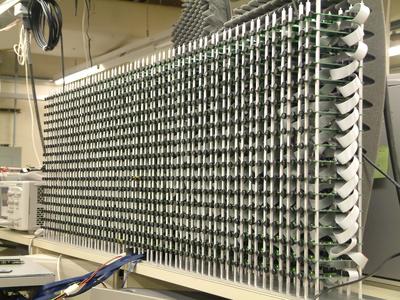http://www.wired.com/gadgetlab/2010/10/ ... d-stadium/
Pretty impressive!
So who wants to make one of these?
-
jason

- XCore Expert
- Posts: 577
- Joined: Tue Sep 08, 2009 5:15 pm
-
lilltroll

- XCore Expert
- Posts: 956
- Joined: Fri Dec 11, 2009 3:53 am
- Location: Sweden, Eskilstuna
"Did you notice the bubble-gum? " :)
PS. The wave-length used in 3G & 4G has about the same wavelength as a human speech in air (at least in the same decade), so it's also nice to use for electromagnetic wave's to achieve nice SNR from the base-station to the cell-phone. DS
PS. The wave-length used in 3G & 4G has about the same wavelength as a human speech in air (at least in the same decade), so it's also nice to use for electromagnetic wave's to achieve nice SNR from the base-station to the cell-phone. DS
Probably not the most confused programmer anymore on the XCORE forum.
-
williamk

- Experienced Member
- Posts: 114
- Joined: Fri Oct 01, 2010 7:47 pm
Whoooo, that's just too cool. :ugeek:
Wk
Wk
-
bsmithyman

- Experienced Member
- Posts: 126
- Joined: Fri Feb 12, 2010 10:31 pm
It's probably something you could do on XMOS. I don't know about 300+ mics, might need multiple G4s for that. It would depend on the analogue stage and how it was set up... It would probably need very high bitrate sampling to do the time shifting of the traces effectively, but the issue is also one of managing that many I/O lines. The precision of the design of the array itself and the microphone elements must be pretty impressive.
-
lilltroll

- XCore Expert
- Posts: 956
- Joined: Fri Dec 11, 2009 3:53 am
- Location: Sweden, Eskilstuna
You do not need a hi sampling-rate, you can shift the signal by any degree since it's bandlimited. Things do not end up in just addition and a time-shift, it ends up in FIR filters which describes the propagation path.
E.g. shifting can be done by the convolution by the actual signal and a sinc.
See http://en.wikipedia.org/wiki/Sampling_theorem
E.g. shifting can be done by the convolution by the actual signal and a sinc.
See http://en.wikipedia.org/wiki/Sampling_theorem
Probably not the most confused programmer anymore on the XCORE forum.
-
bsmithyman

- Experienced Member
- Posts: 126
- Joined: Fri Feb 12, 2010 10:31 pm
Good point, I was thinking in terms of whole-sample shifts to reduce the filtering required. Even then you'd need to do post-processing, so there's filtering required regardless.lilltroll wrote:You do not need a hi sampling-rate, you can shift the signal by any degree since it's bandlimited. Things do not end up in just addition and a time-shift, it ends up in FIR filters which describes the propagation path.
E.g. shifting can be done by the convolution by the actual signal and a sinc.
See http://en.wikipedia.org/wiki/Sampling_theorem
-
lilltroll

- XCore Expert
- Posts: 956
- Joined: Fri Dec 11, 2009 3:53 am
- Location: Sweden, Eskilstuna
I do not have any special knowledge about this special device, but in general there is several reasons to use FIR-filters/FFT filtering. The market-department usually talk about "subtraction and delays" independent of the technical solution ;)


From http://www.nt.tuwien.ac.at/fileadmin/us ... linger.pdf
Some even heavier device

And you can of course do it the other way around; as a transmitter

This one, seems to use 128 loudspeakers to create Wave-Field Synthesis



From http://www.nt.tuwien.ac.at/fileadmin/us ... linger.pdf
Some even heavier device

And you can of course do it the other way around; as a transmitter

This one, seems to use 128 loudspeakers to create Wave-Field Synthesis

Probably not the most confused programmer anymore on the XCORE forum.
-
otitov

- XCore Addict
- Posts: 207
- Joined: Thu Dec 10, 2009 11:00 pm
- Location: Mexico
Lilltroll, please take a look at "phased arrays" http://en.wikipedia.org/wiki/Phased_array, they have about 100 years.lilltroll wrote:...
PS. The wave-length used in 3G & 4G has about the same wavelength as a human speech in air (at least in the same decade), so it's also nice to use for electromagnetic wave's to achieve nice SNR from the base-station to the cell-phone. DS
I am quite surprised that phased array principles were applied to sound propagation just now (may be I am just not aware of earlier works in sound phased arrays).
-
leon_heller

- XCore Expert
- Posts: 546
- Joined: Thu Dec 10, 2009 10:41 pm
- Location: St. Leonards-on-Sea, E. Sussex, UK.
Beamforming is a related technique, it's often used in sonars. I got a lot of electret microphones to try the technique out, I was intending to mount them in holes in a strip of wood.
-
bsmithyman

- Experienced Member
- Posts: 126
- Joined: Fri Feb 12, 2010 10:31 pm
It's also used in many/most medical ultrasound systems, either physical beam forming or shifting of the digital signals.leon_heller wrote:Beamforming is a related technique, it's often used in sonars. I got a lot of electret microphones to try the technique out, I was intending to mount them in holes in a strip of wood.
